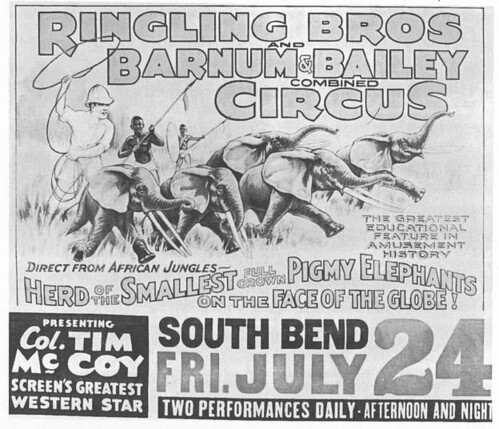| This photo is of the poster RBBB used in 1936 to advertise its new African elephants, though only three made it to the show and of them only two were the real forest or "pigmy" elephants. But the poster is accurate in showing that five were supposed to come to the show. Moreover, it pictures a man who might pass for Commandant Laplume who headed up the captures in the Congo. |
Wednesday, June 18, 2008
African Elephant Domestication #3
Posted by
Buckles
at
6/18/2008 06:14:00 AM
![]()
Subscribe to:
Post Comments (Atom)






3 comments:
Another fantastic piece of animal research from an incredible Historian. Thanks Richard!
Bob
I couldn't agree more with Bob -- Richard this was a fabulous write up. Your late "brother," Chang Reynolds, used to tell me years ago that you were quite the menagerie historian -- this once again proves that sage observation by Chang.
Bill Schreiber
I can only add agreement to Bob and Bill's statement. RJR is truly an encyclopedia of captive animal history. A living, breathing wikopedia.
Wade Burck
Post a Comment